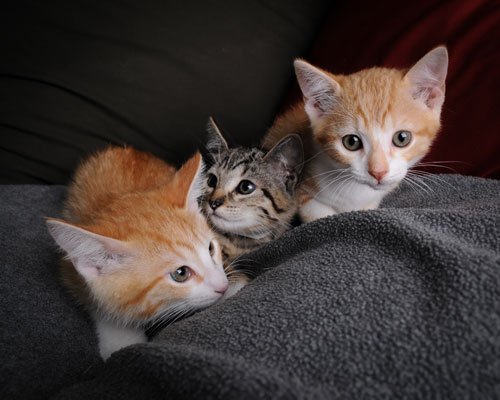How to help Your Cat have pleasant Veterinary Visits

Fear is the primary cause of misbehavior. Knowing this can help prevent problematic veterinary visits.
GETTING THE CAT INTO THE CARRIER
Keep the carrier out in the home. Put treats inside. Train cats to view the carrier as a safe haven and “home away from home.” A quick response is crucial in case of disaster or emergency. Carriers that have both a top and a front opening are best. Top-loading carriers allow for stress-free placement and removal of the cat. A removable carrier top enables cats to be examined while remaining in the bottom half of the carrier. Do not “dump” a cat out of the carrier.
ADJUSTING TO CAR RIDES
Always put the cat in a carrier or other safe container. Take the cat for regular car rides, beginning with very short ones, to places other than the veterinary hospital. To prevent car sickness, do not feed before traveling. Reward verbally, with positive attention, and with treats.
PLEASANT VETERINARY VISITS
Bring along the cat’s favorite treats, toys, and blanket. Perform regular home maintenance procedures, including grooming, nail trimming, and teeth brushing. “Play vet” procedures that mimic temperature taking, ear cleaning, and pilling can help cats better adjust to the veterinary hospital and to future home care when necessary. Regular trips to the veterinary hospital for “fun” visits involving no examinations or procedures provide owners and staff with the opportunity to reward the cat with praise and food treats.
From the American Association of Feline Practitioners
- Behavior (12)
- Caring for your pet (266)
- cat (6)
- Community Events (19)
- dog (7)
- From Our Clients (15)
- Happy Tails (9)
- News (424)
- Press (53)
- Products (2)
- Questions (4)
- Recalls (1)
- Special Offers (5)
- Tips & Advice (231)
- Uncategorized (19)
- Veterinary Services (48)
